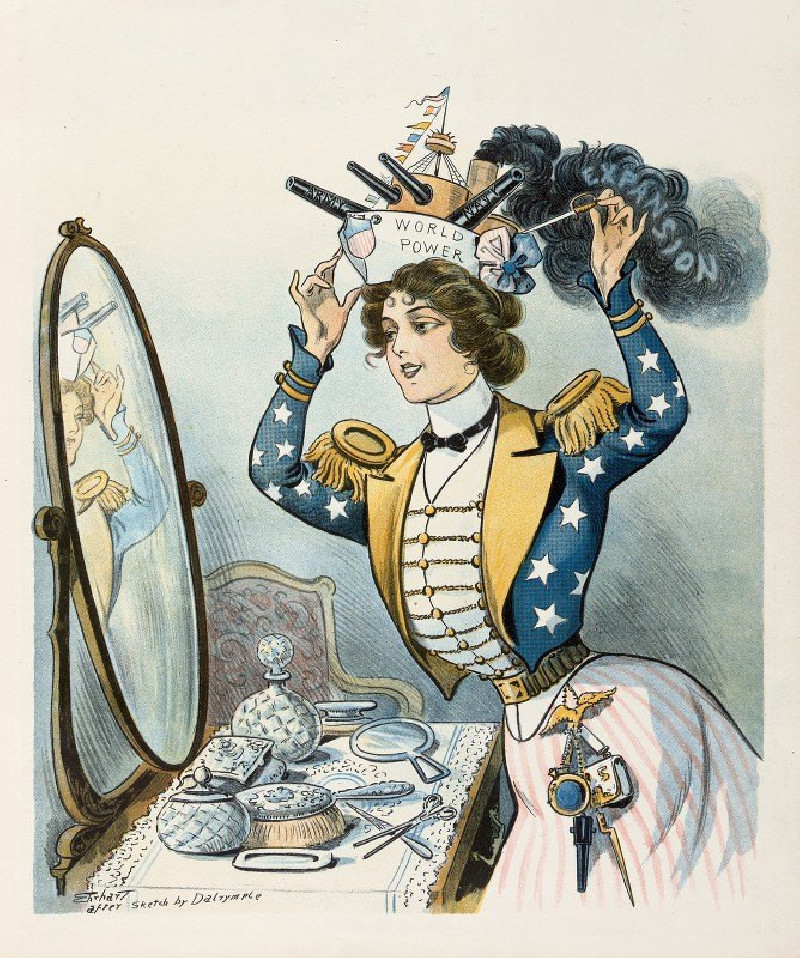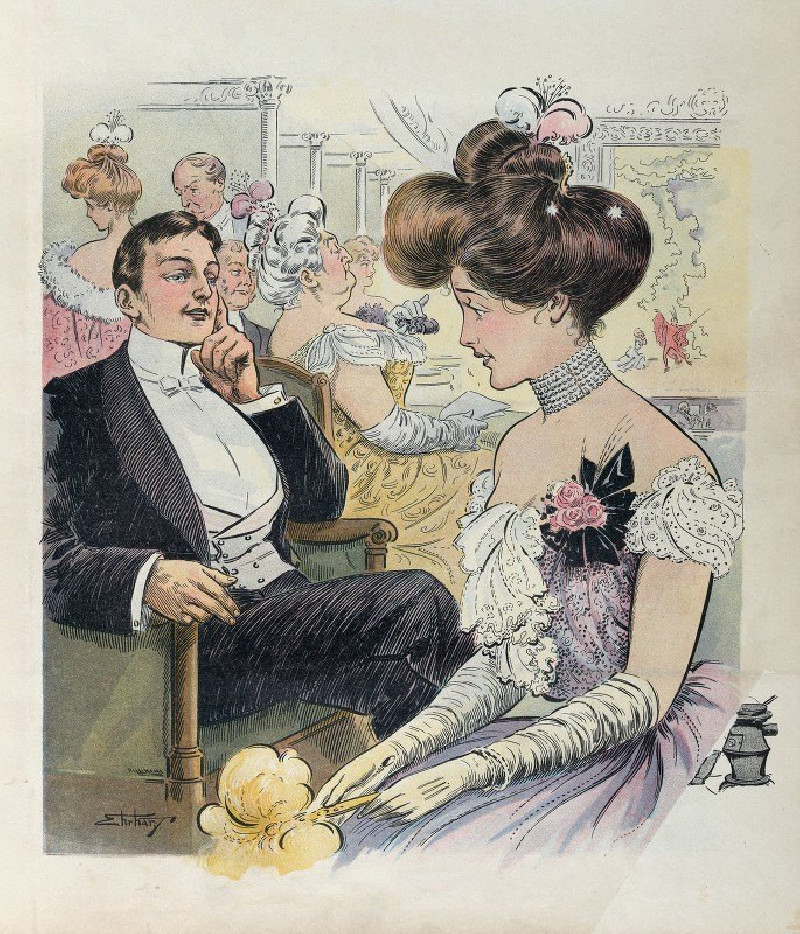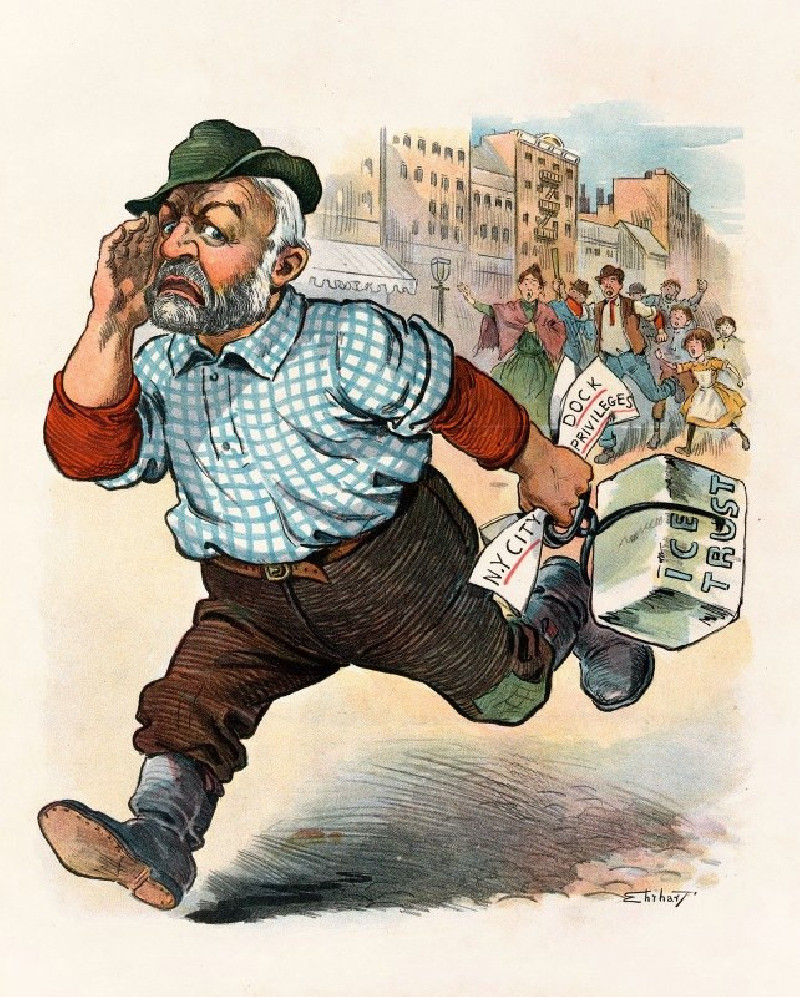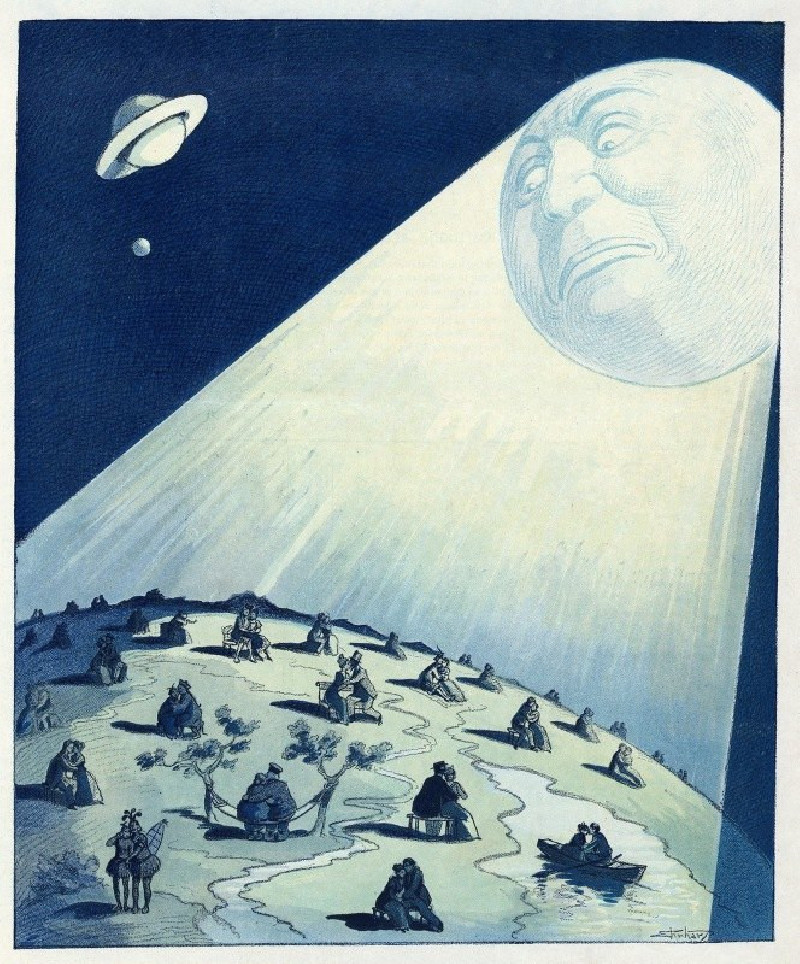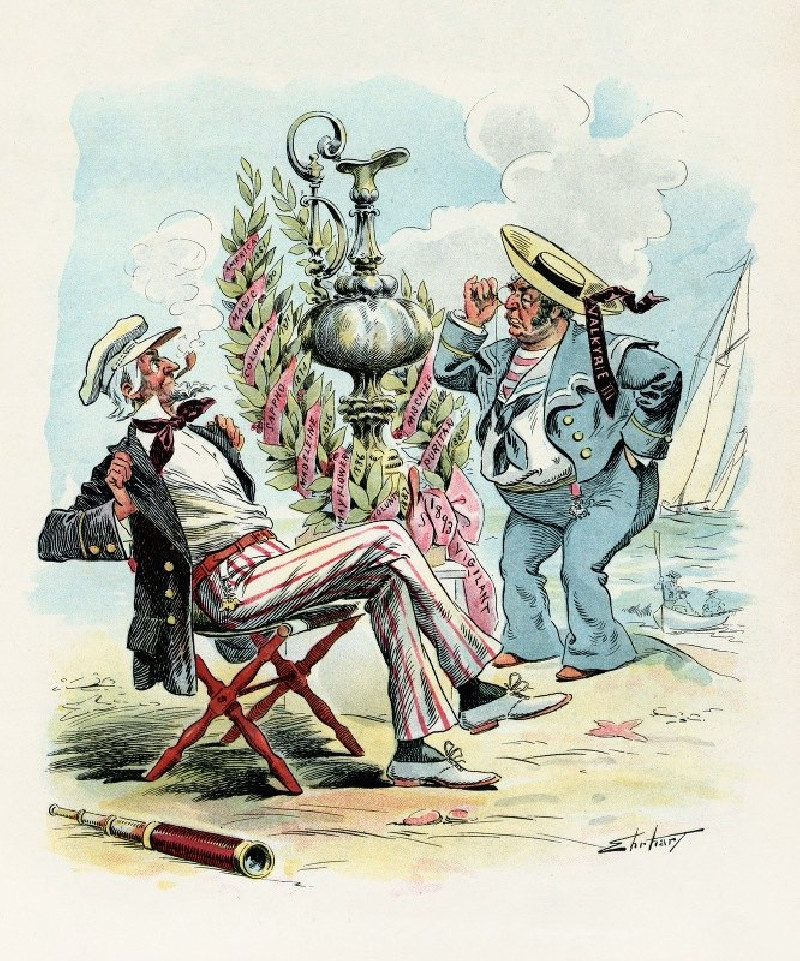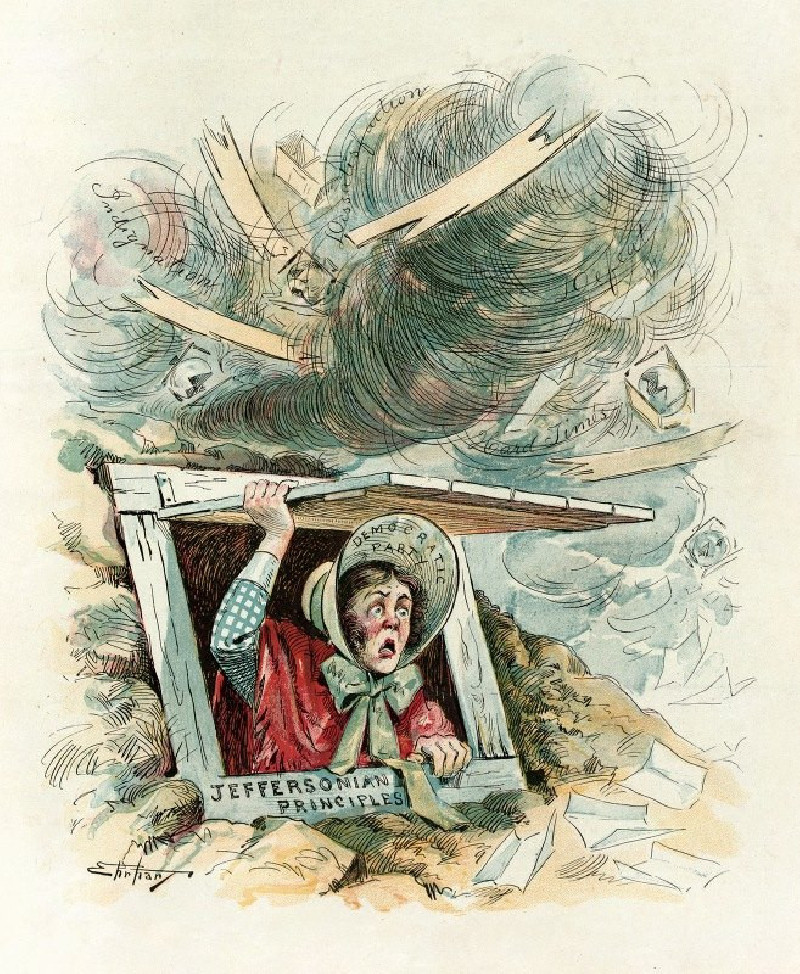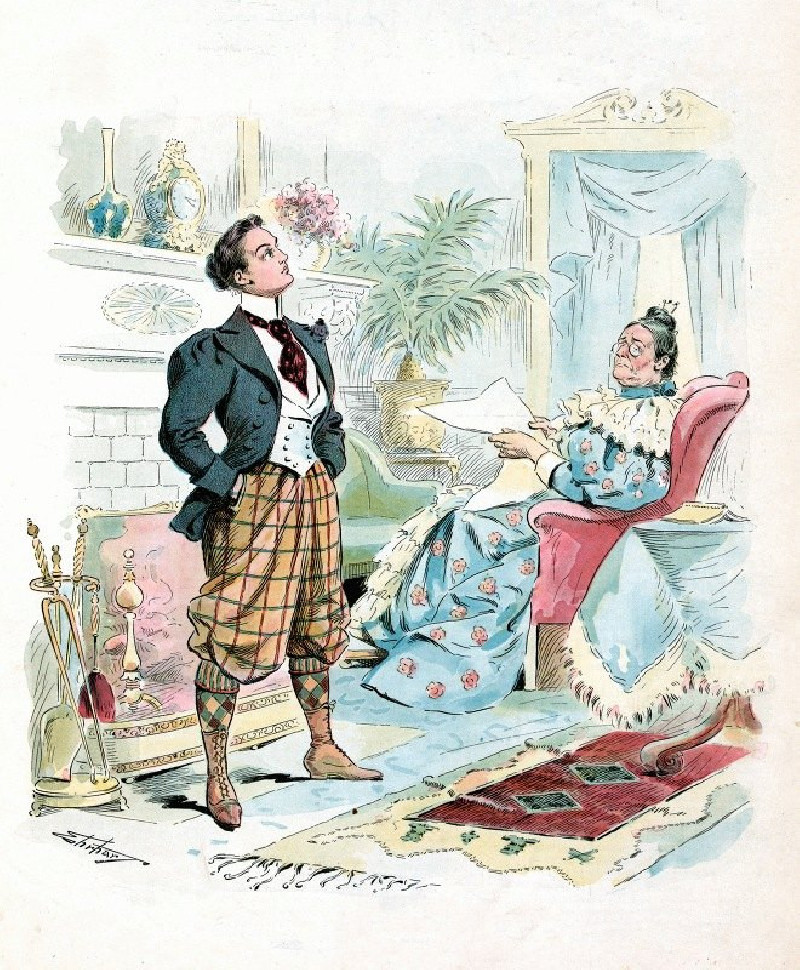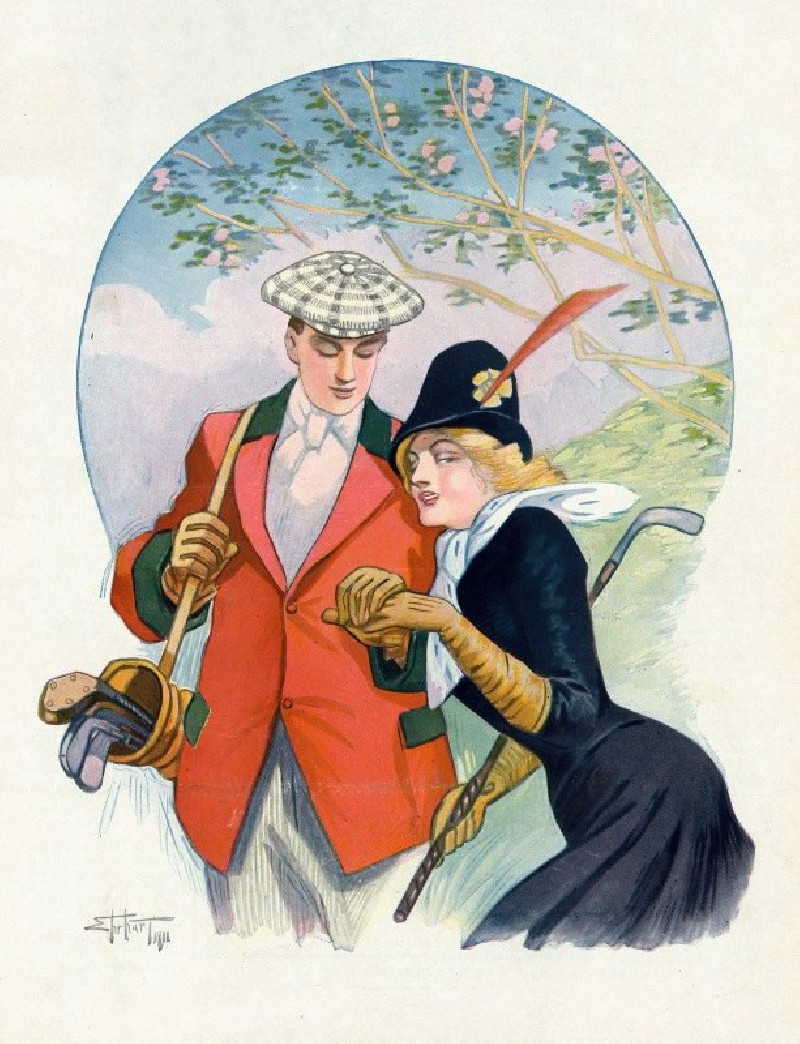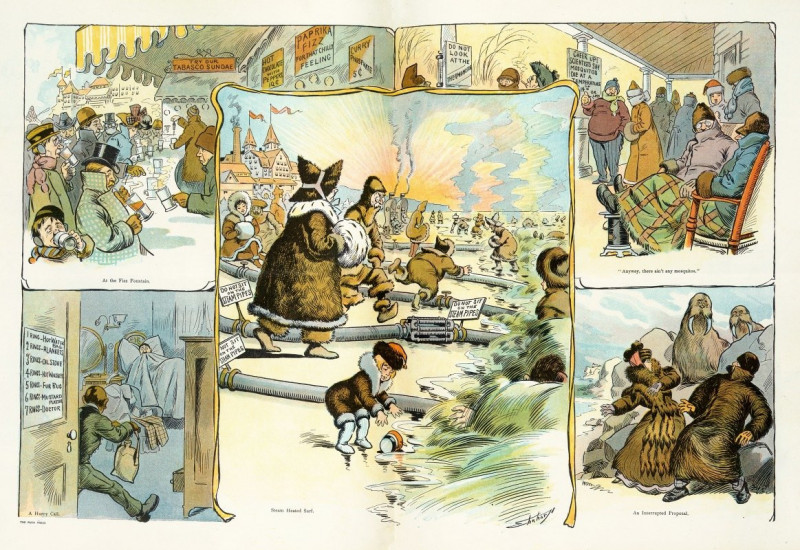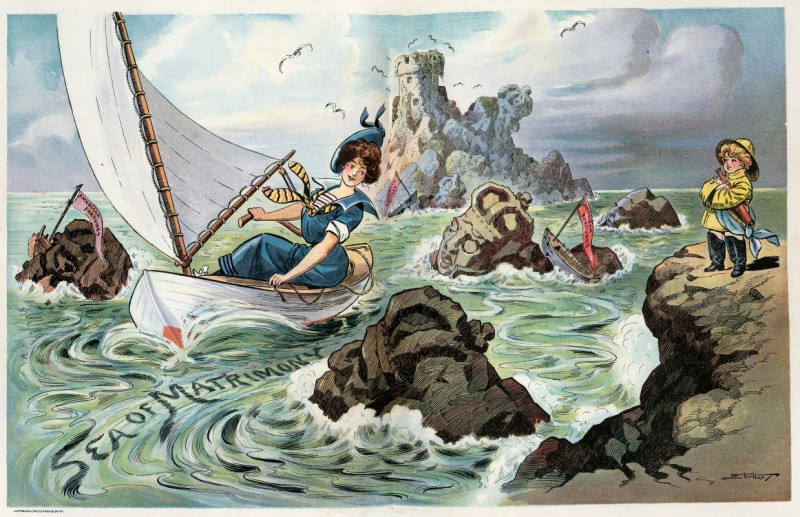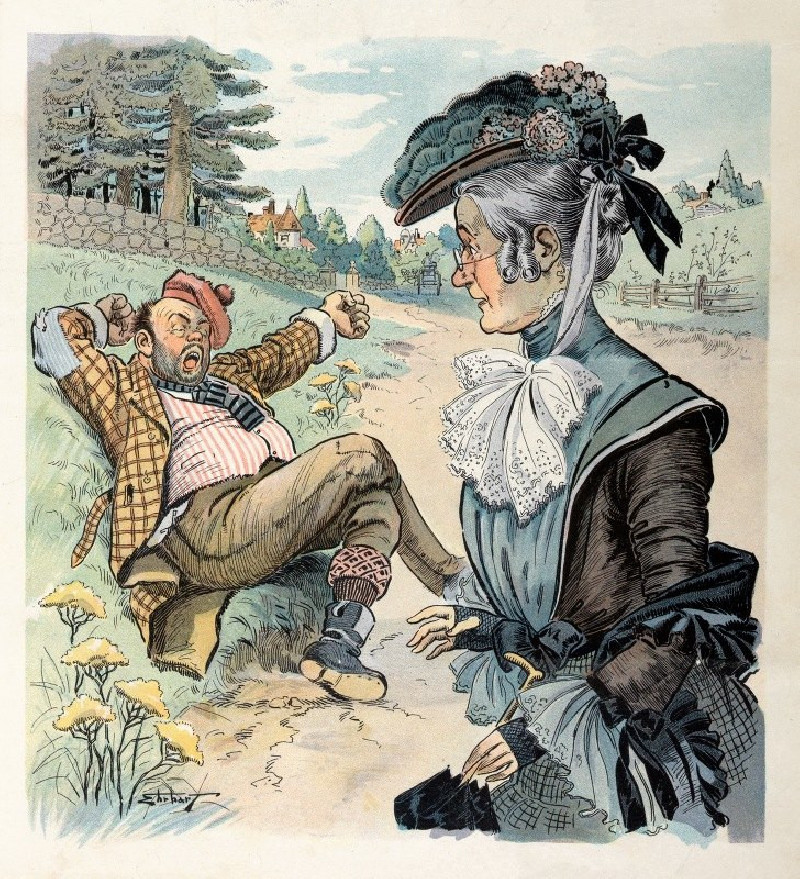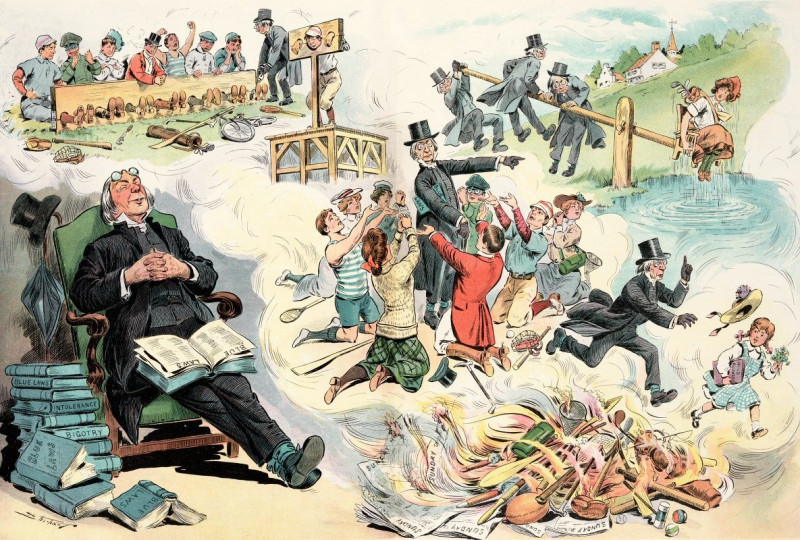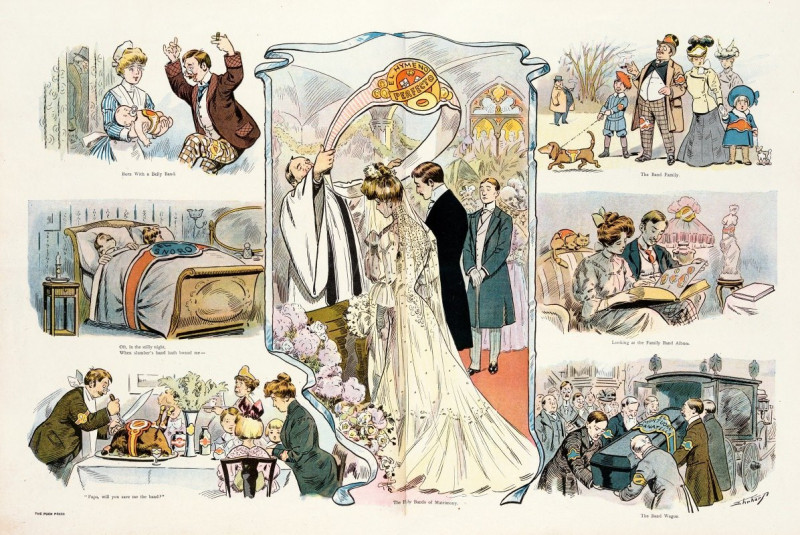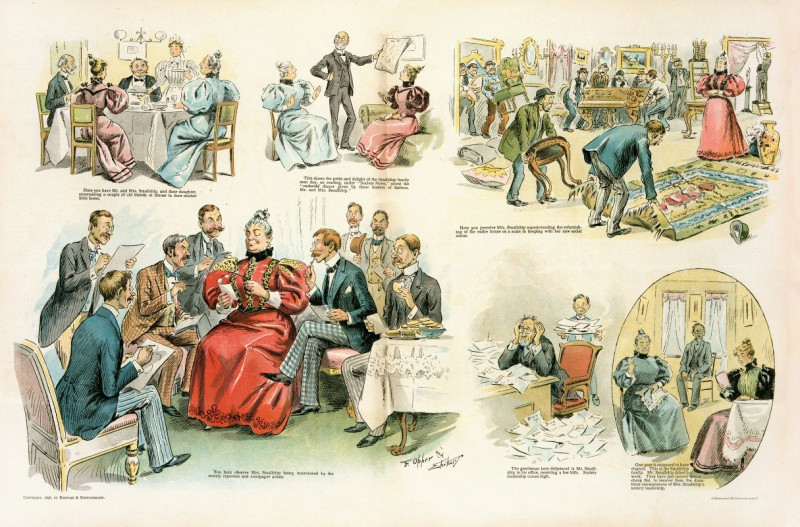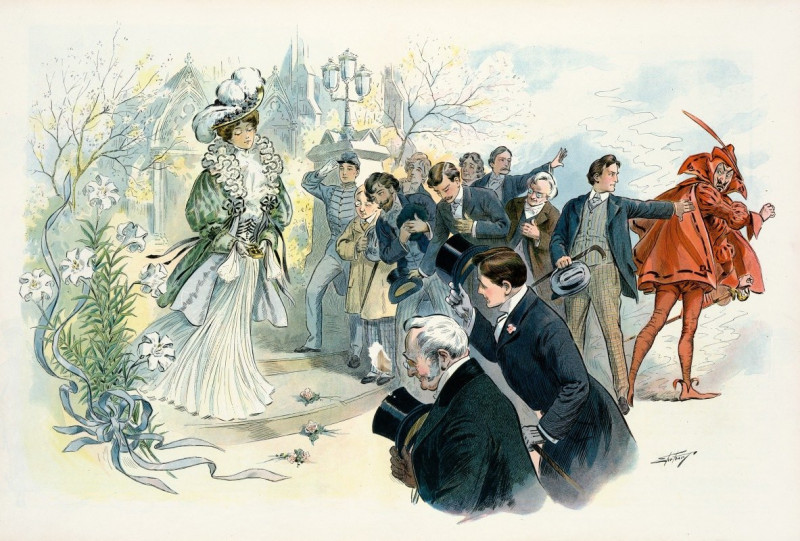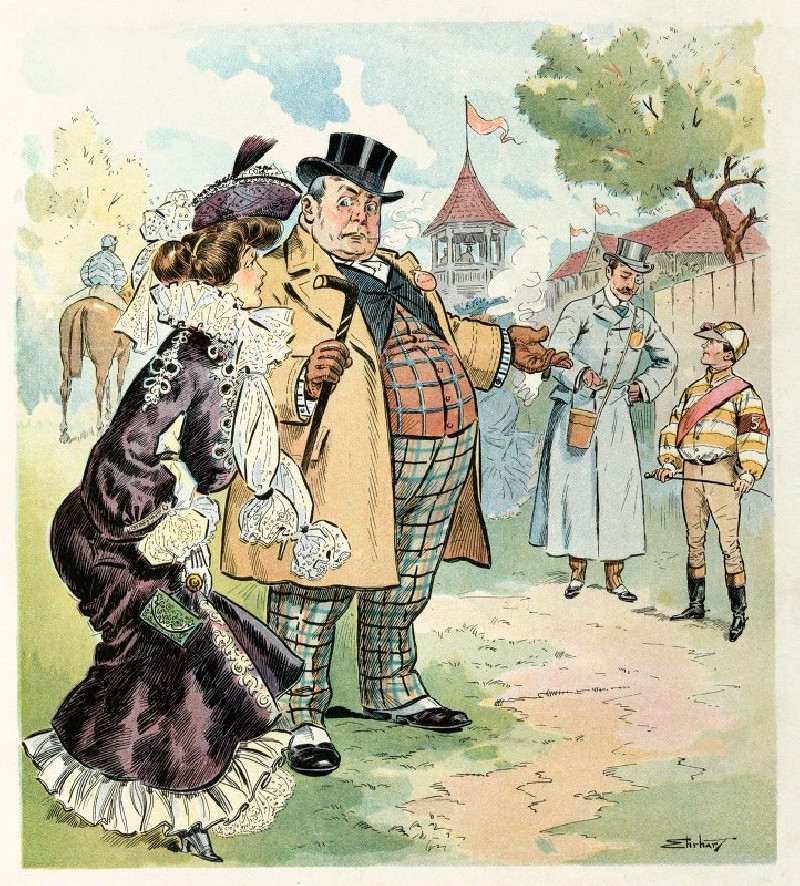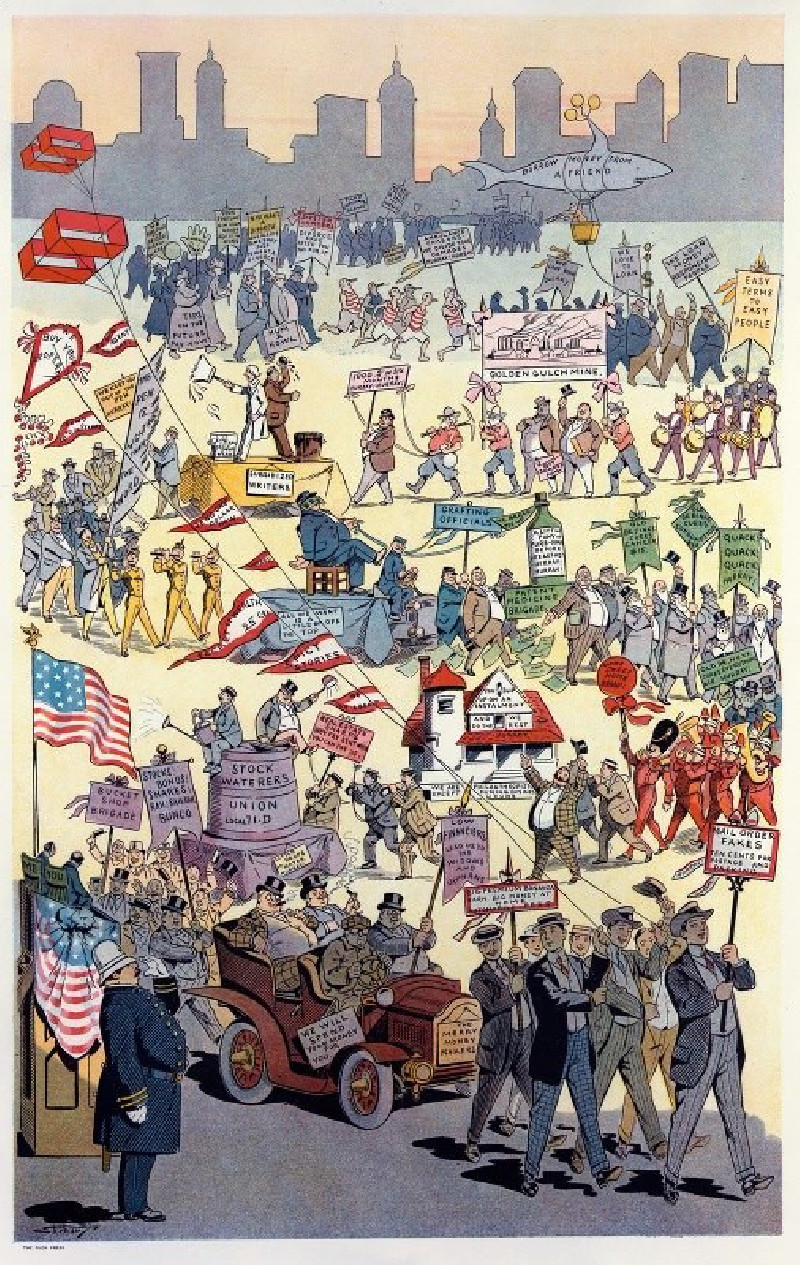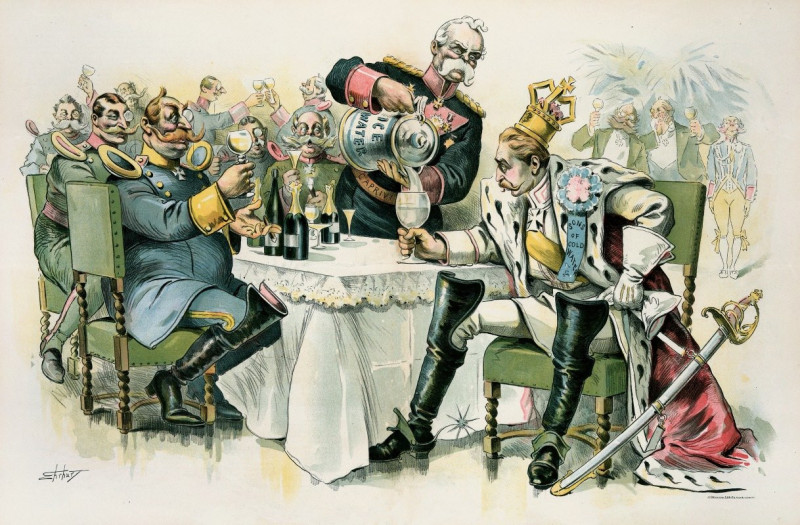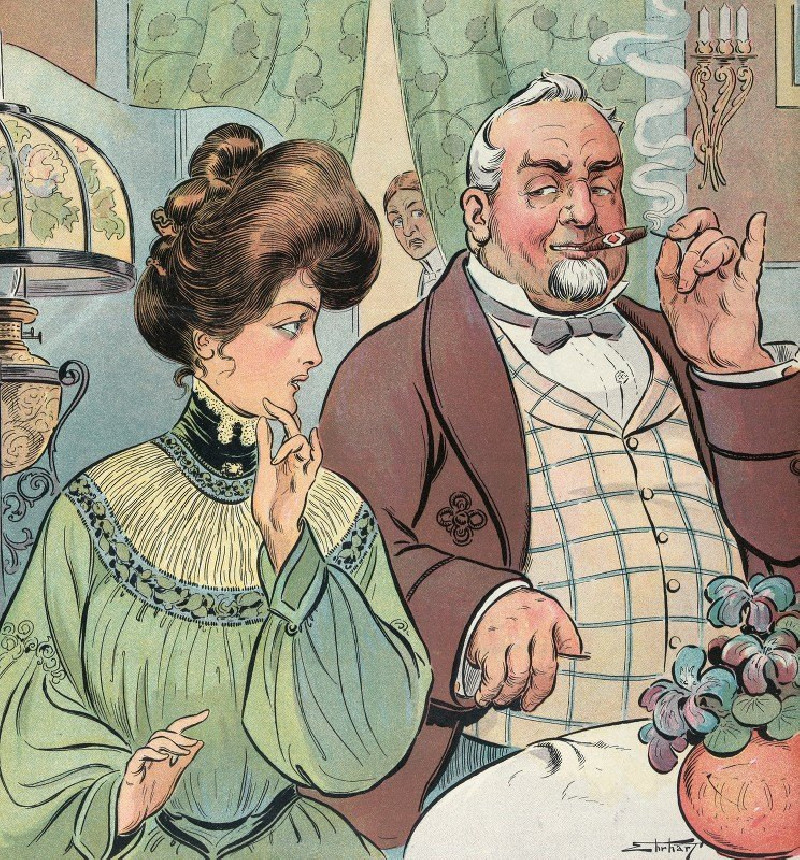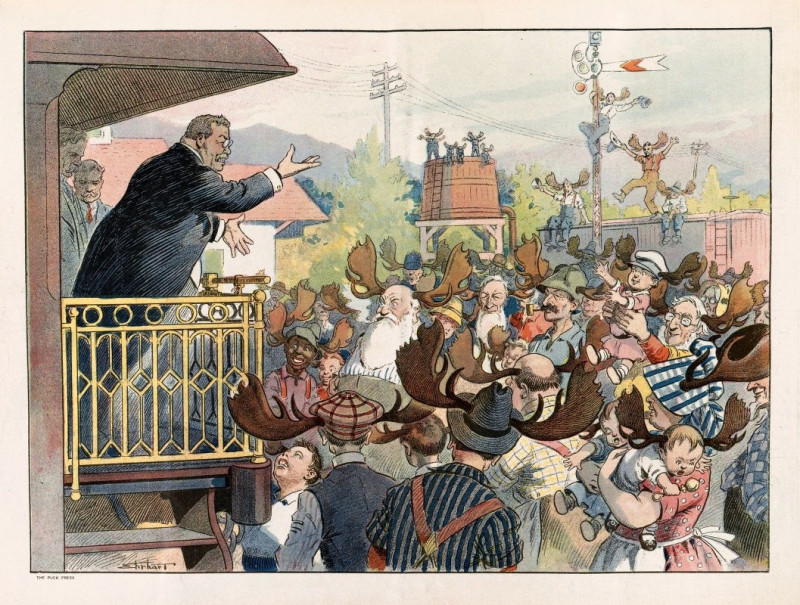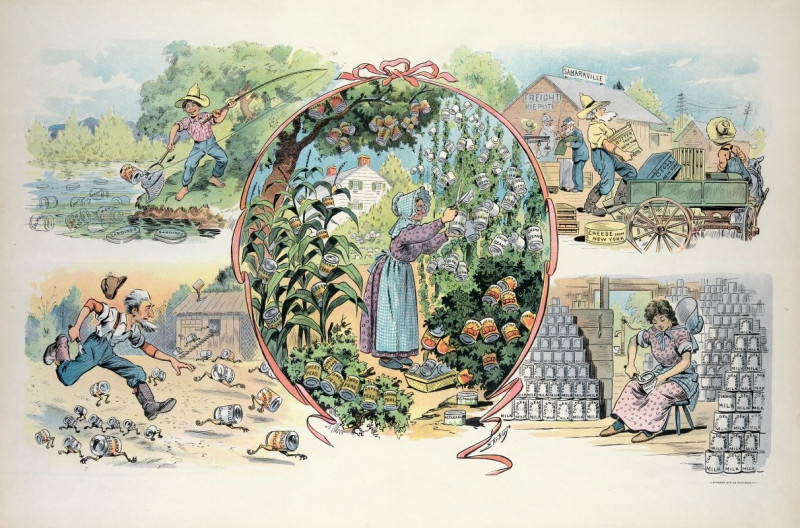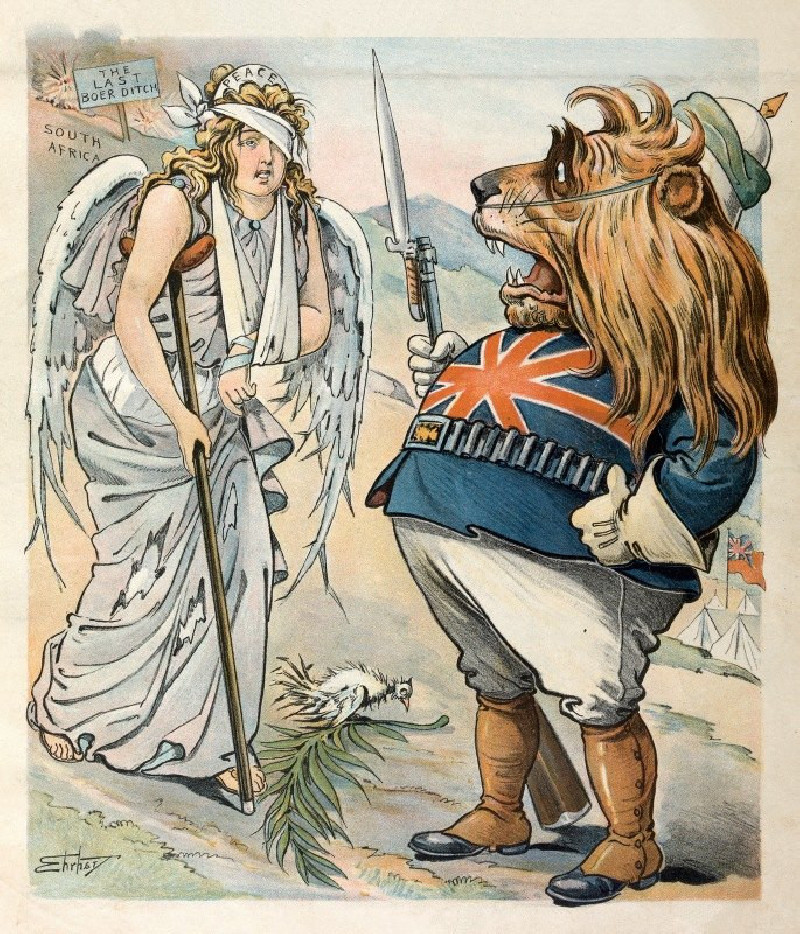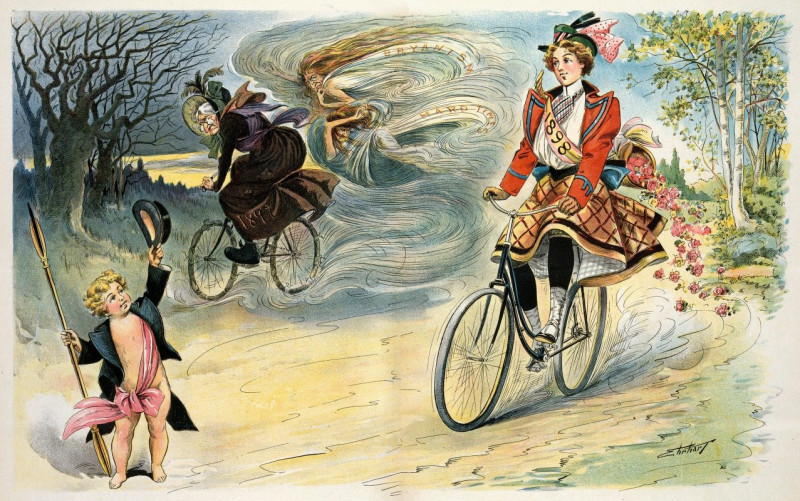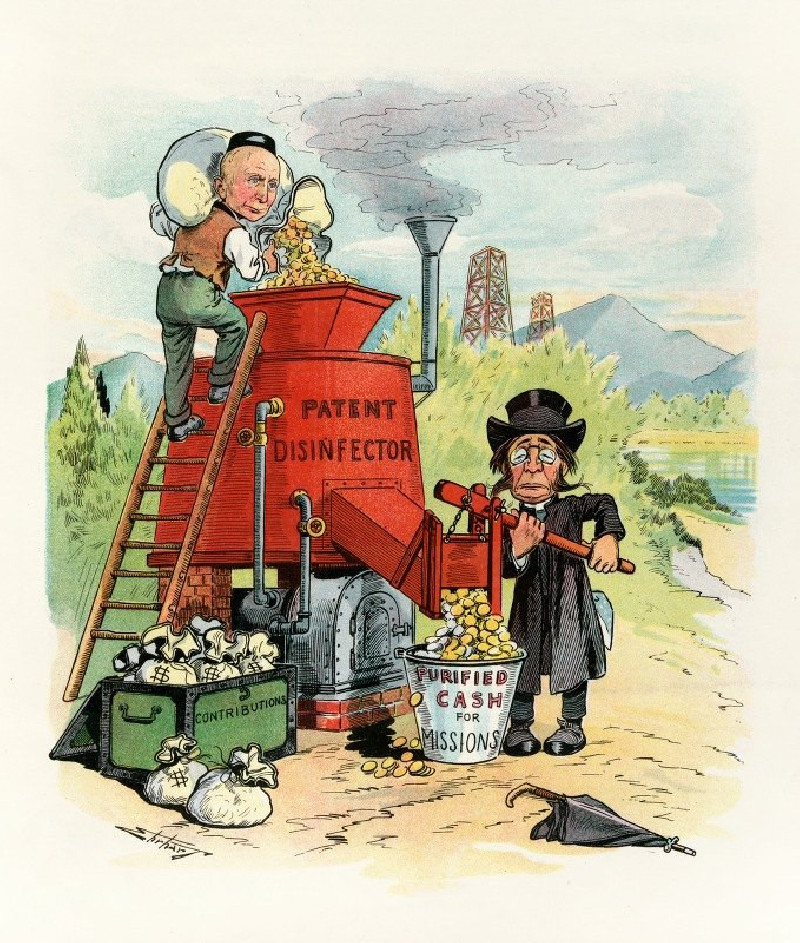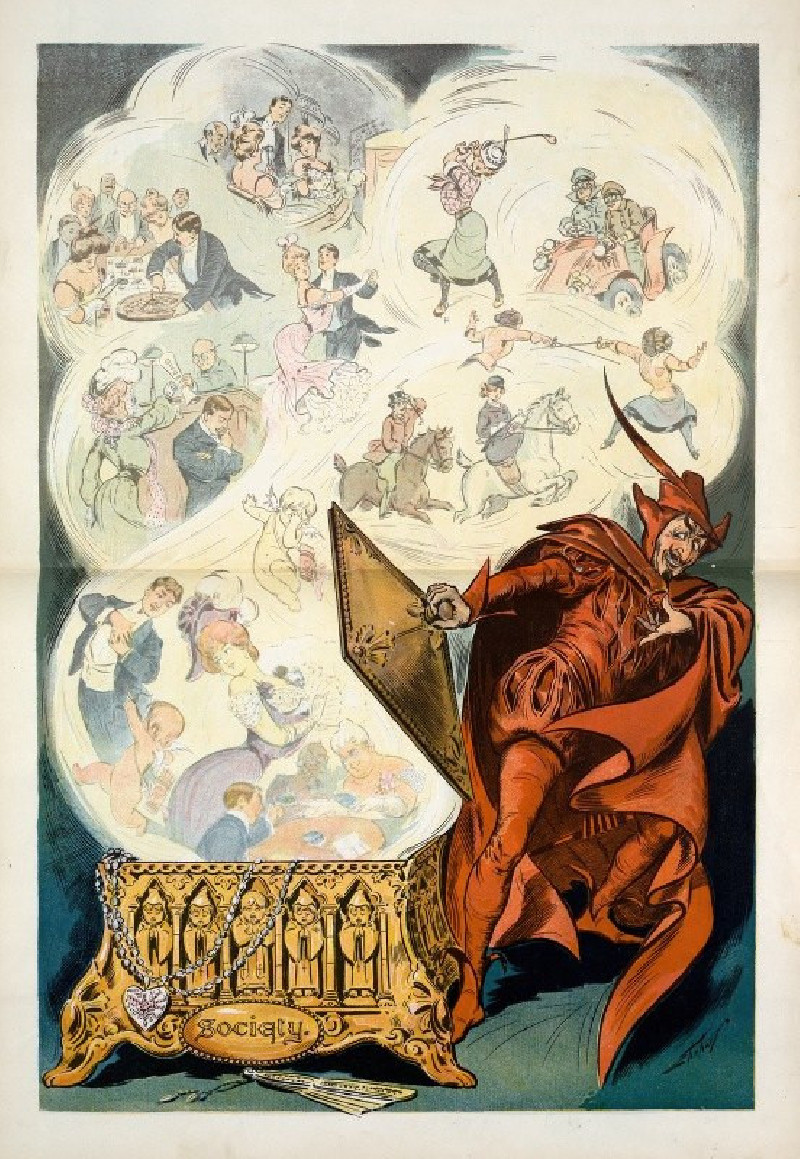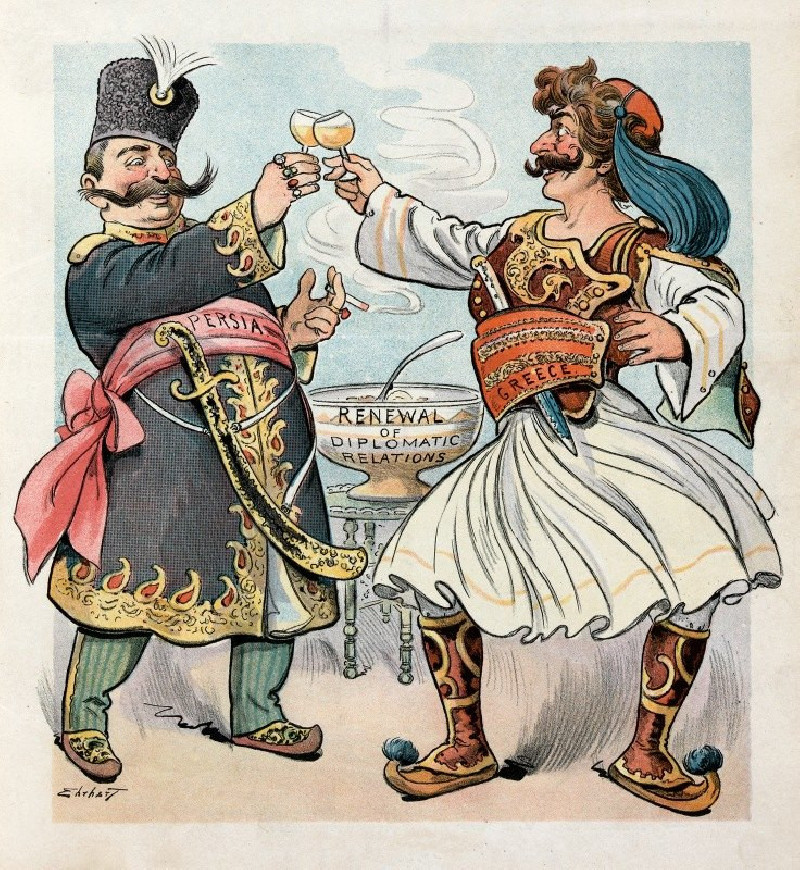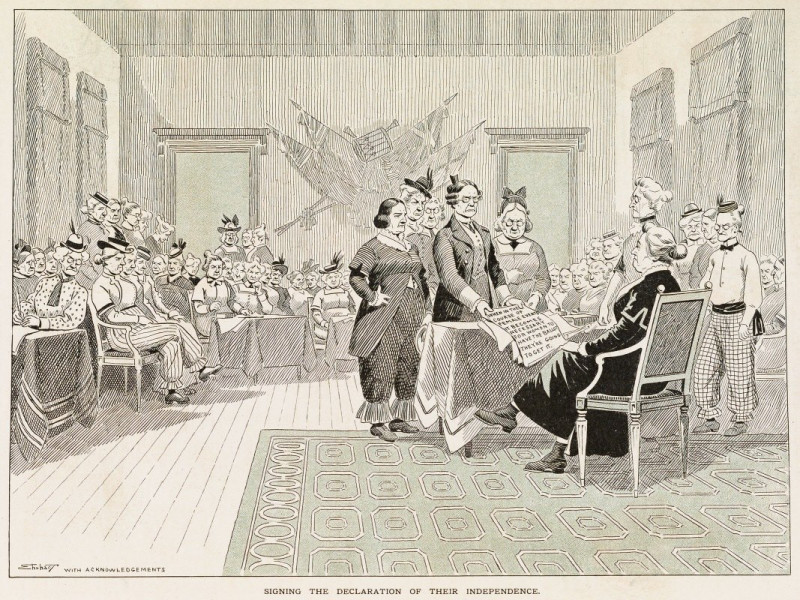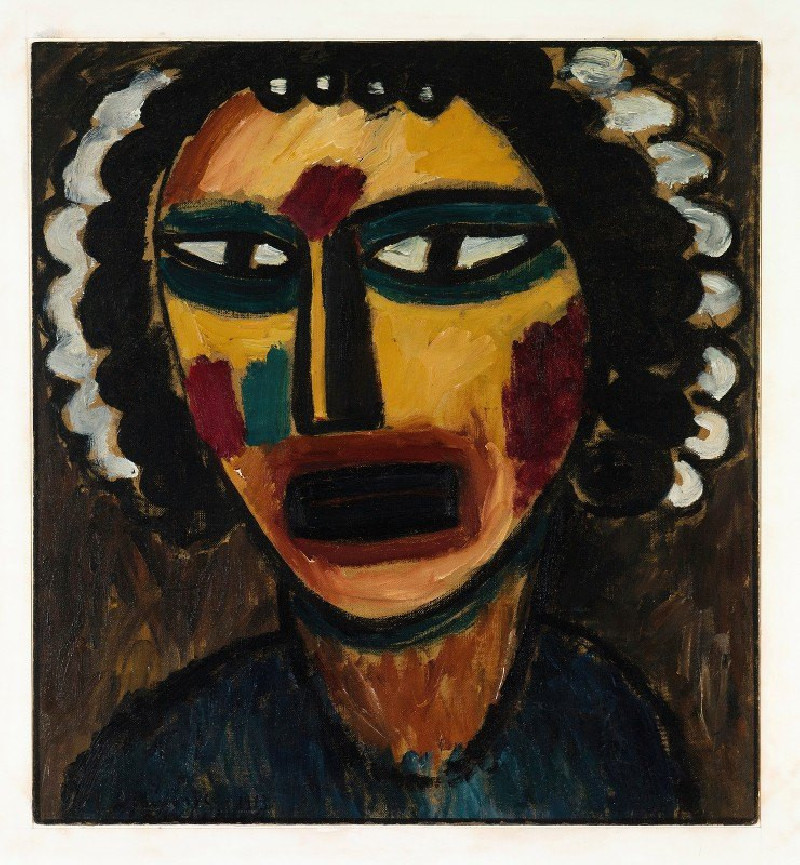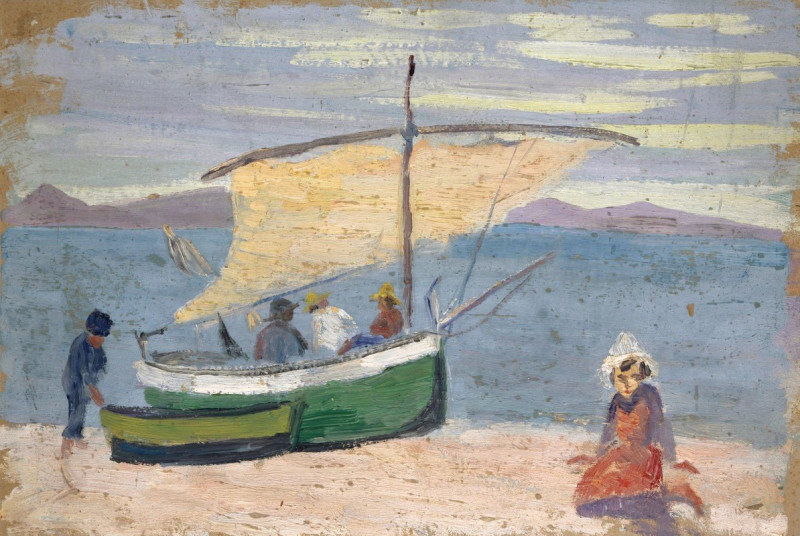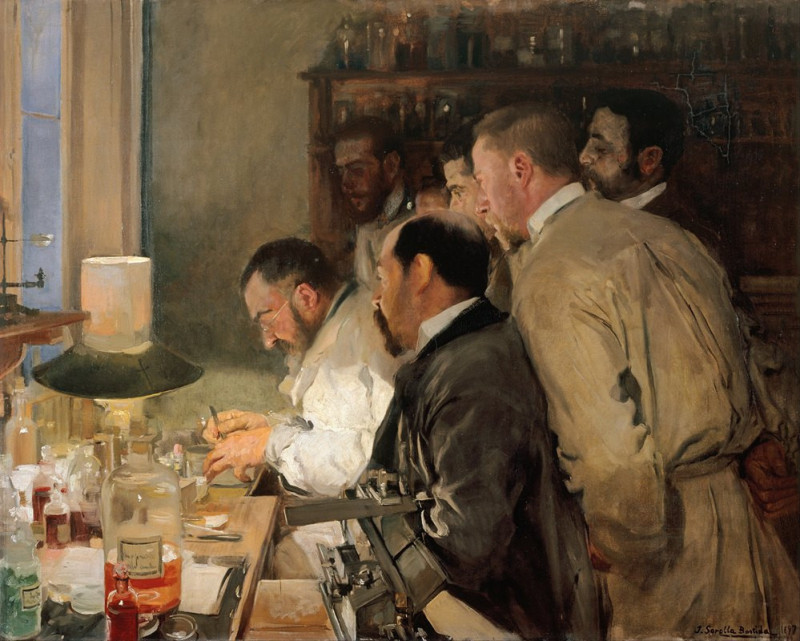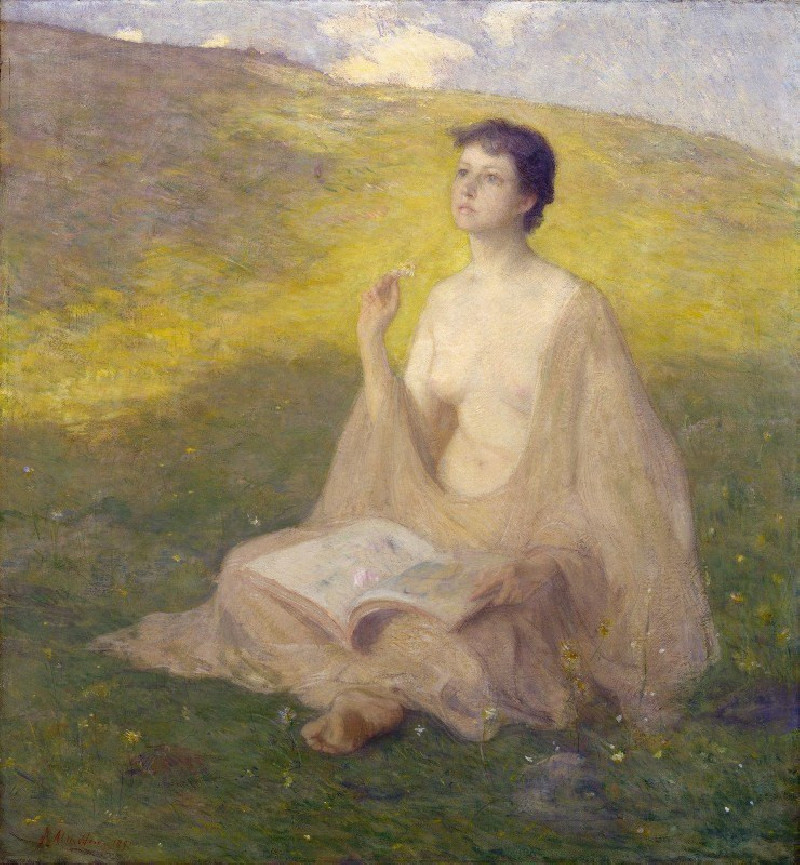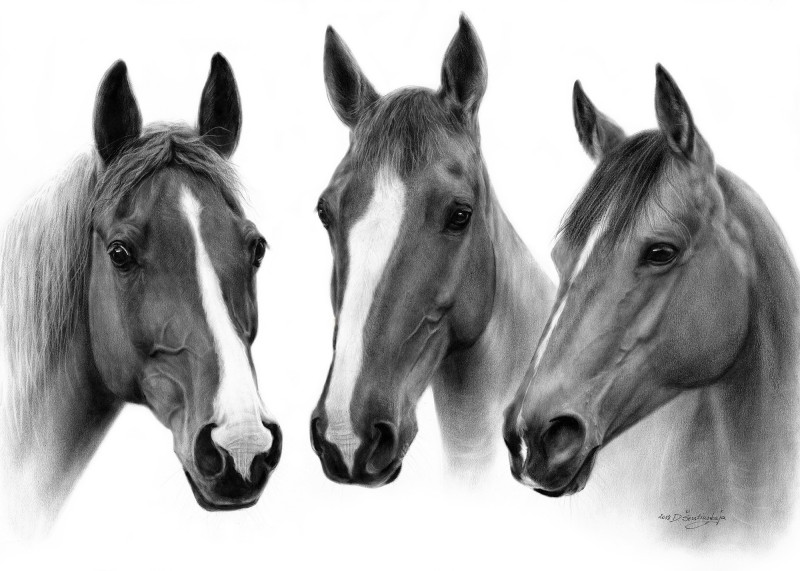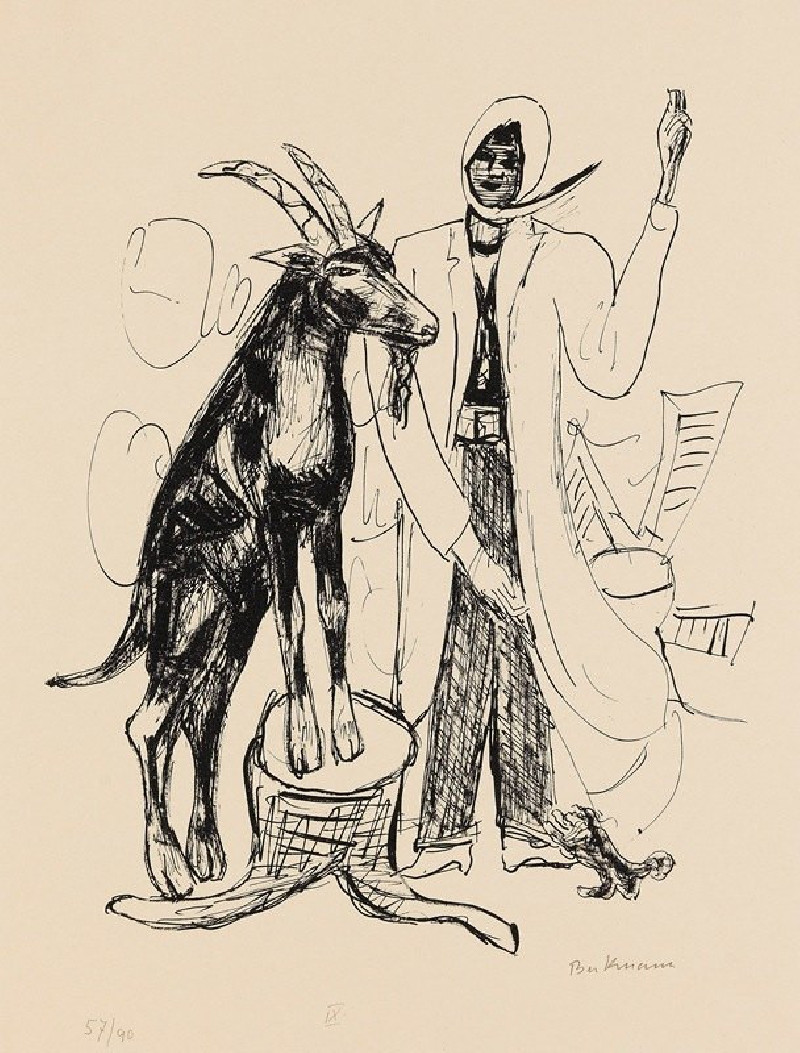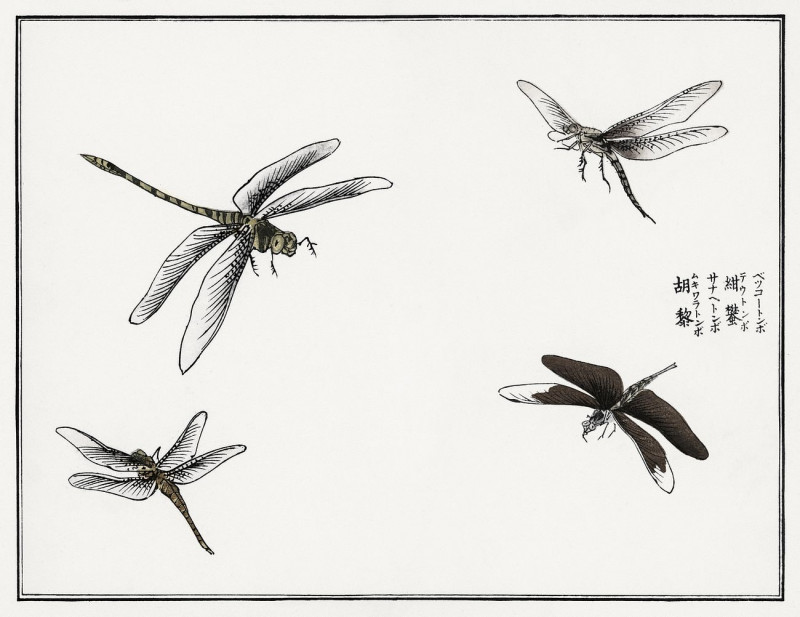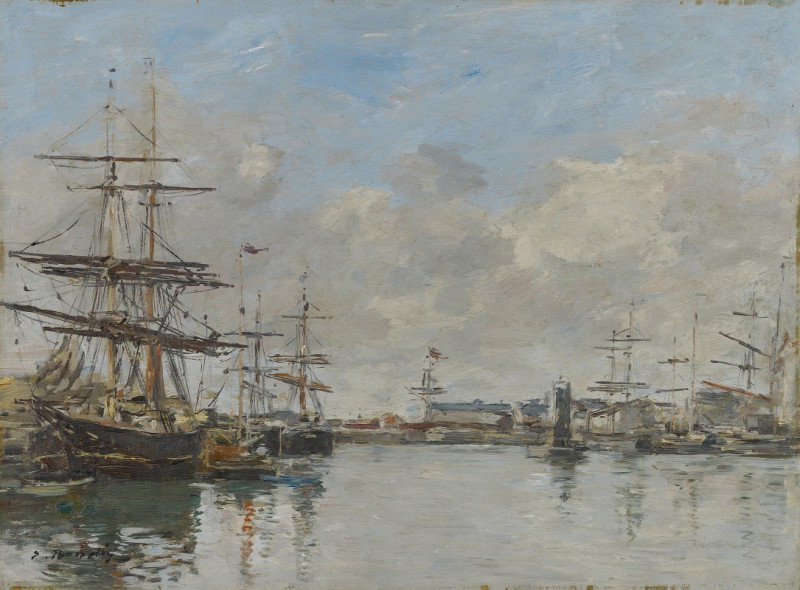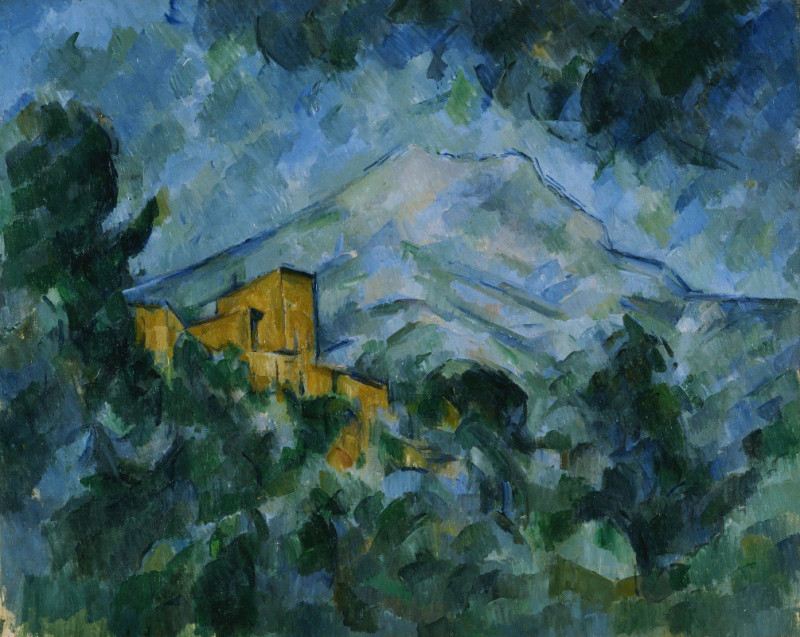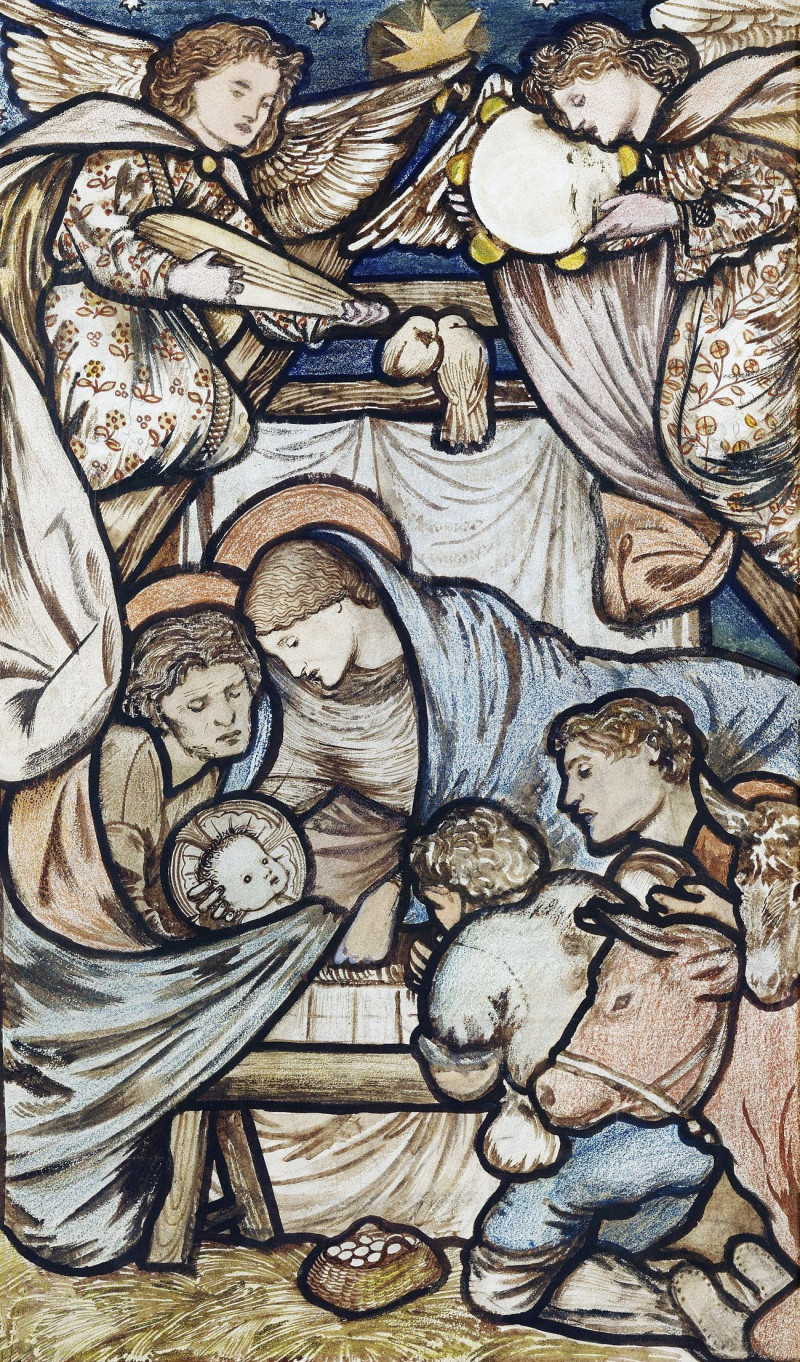An international high noon divorce (1906)
Technique: Giclée quality print
Recommended by our customers
More about this artwork
Samuel Ehrhart’s vividly illustrated "An International High Noon Divorce" (1906) is a satirical tableau that delves into the complexities and spectacle of early 20th-century divorce proceedings. This painting captures the scene of a divorce court bustling with a cast of characters whose lively expressions and garish attire reflect the public and theatrical nature of personal affairs during this era.At the center of the courtroom, we see the principal figures, a couple stepping forward, presumably the ones dissolving their marriage. The man, looking stern and resigned, steps away from his former partner, a well-dressed woman with a firm expression, indicative of her readiness to move forward. She clutches legal documents, perhaps symbolizing her new independence and preparedness.The environment around them is frenetic and crowded, signifying the public interest in such private matters. Spectators include a diverse array of societal roles—creditors, jurors, friends, relatives, and even a group labeled as "co-respondents," implying their involvement or interest in the case.The setting is festooned with celebratory ribbons and banners, sarcastically suggesting that the divorce is an event to be celebrated like a public holiday or festival. Continuous ribbons bear text such as "divorce laws" and "alimony," emphasizing the legalistic circus surrounding the event.Ehrhart's work serves not just as a depiction but as a critique of the era's social norms, where personal decisions became public entertainment and fodder for societal judgment. His use of vibrant colors and detailed expressions invites viewers to reflect on the intersection of personal liberty, legal proceedings, and societal spectacle.
Delivery
Returns
American cartoonist and illustrator born in Pottsville, Pennsylvania, Ehrhart received his education in the New York City school system. Subsequently, he studied art in Munich. His work appeared in Harper's Monthly (1878-79), Puck (1880, and 1888-1913), and Judge (1887). He died in Brooklyn, New York on October 26, 1937.




